Balkinization
an unanticipated consequence of
Jack M. Balkin
Balkinization Symposiums: A Continuing List
E-mail:
Jack Balkin:
jackbalkin at yahoo.com
Bruce Ackerman
bruce.ackerman at yale.edu
Ian Ayres
ian.ayres at yale.edu
Corey Brettschneider
corey_brettschneider at brown.edu
Mary Dudziak
mary.l.dudziak at emory.edu
Joey Fishkin
joey.fishkin at gmail.com
Heather Gerken heather.gerken at yale.edu
Abbe Gluck abbe.gluck at yale.edu
Mark Graber
mgraber at law.umaryland.edu
Stephen Griffin
sgriffin at tulane.edu
Jonathan Hafetz
jonathan.hafetz at shu.edu
Jeremy Kessler
jkessler at law.columbia.edu
Andrew Koppelman
akoppelman at law.northwestern.edu
Marty Lederman
msl46 at law.georgetown.edu
Sanford Levinson
slevinson at law.utexas.edu
David Luban
david.luban at gmail.com
Gerard Magliocca
gmaglioc at iupui.edu
Jason Mazzone
mazzonej at illinois.edu
Linda McClain
lmcclain at bu.edu
John Mikhail
mikhail at law.georgetown.edu
Frank Pasquale
pasquale.frank at gmail.com
Nate Persily
npersily at gmail.com
Michael Stokes Paulsen
michaelstokespaulsen at gmail.com
Deborah Pearlstein
dpearlst at yu.edu
Rick Pildes
rick.pildes at nyu.edu
David Pozen
dpozen at law.columbia.edu
Richard Primus
raprimus at umich.edu
K. Sabeel Rahmansabeel.rahman at brooklaw.edu
Alice Ristroph
alice.ristroph at shu.edu
Neil Siegel
siegel at law.duke.edu
David Super
david.super at law.georgetown.edu
Brian Tamanaha
btamanaha at wulaw.wustl.edu
Nelson Tebbe
nelson.tebbe at brooklaw.edu
Mark Tushnet
mtushnet at law.harvard.edu
Adam Winkler
winkler at ucla.edu
Compendium of posts on Hobby Lobby and related cases
The Anti-Torture Memos: Balkinization Posts on Torture, Interrogation, Detention, War Powers, and OLC
The Anti-Torture Memos (arranged by topic)
Recent Posts
Is This Battle Royale?
Just A Few Blogs
ACS Blog
Alas, a Blog
Althouse
Arts and Letters Daily
Atrios (Eschaton)
Bill of Health
Buzzflash.com
Buzz Machine
Cato at Liberty
Juan Cole (Informed Comment)
Concurring Opinions
The Constitution in 2020
Corrente
Crooked Timber
Daily Howler
Daily Kos
Dana Boyd
Brad DeLong
Digby (Hullabaloo)
Discriminations
Daniel Drezner
Kevin Drum (Mother Jones)
Electrolite
En Banc
Eunomia (Daniel Larison)
Fafblog
Michael Froomkin (Discourse.net)
GovLab (Beth Noveck)
Rick Hasen (Election Law)
History News Network
How Appealing
Ignatz (Sam Heldman)
The Importance of (Ernie Miller)
Infolaw
Instapundit
International Economic Law and Policy Blog
IntLawGrrls
Jacob Levy
Jesus' General
Jurisdynamics
The Kitchen Cabinet
Mark Kleiman
Law Blog Central
Larry Lessig
Lawyers, Guns and Money
Liberal Oasis
Brian Leiter's Law School Reports
The Leiter Reports
Marginal Revolution
Megan McArdle
Memeorandum
Metafilter
Mirror of Justice
The New Republic
Newseum
No More Mister Nice Blog
Brendan Nyhan
Opinio Juris
Orcinus
The Originalism Blog
Pandagon
Passport (Foreign Policy)
Overcoming Bias
Political Animal (Washington Monthly)
Political Theory Daily Review
Political Wire (Taegan Goddard)
The Poor Man
Virginia Postrel
Prawfsblawg
Public Reason
Jonathan Rauch
Raw Story
Redstate
ReligiousLeftLaw.com
Reporters Committee For Freedom of the Press
Reproductive Rights Blog
Rothman's Roadmap to the Right of Publicity
SCOTUS Blog
Seeing the Forest
Clay Shirky
The Shifted Librarian
The Situationist
Larry Solum (Legal Theory)
Andrew Sullivan
Talking Points Memo
Talk Left
Tapped
Tbogg
TechPresident
The Paper Chase (Jurist)
Tom Paine
Tom Tomorrow (This Modern World)
Eve Tushnet
Uggabugga
University of Chicago Law School Faculty Blog
Unqualified Offerings
The Volokh Conspiracy
War and Piece (Laura Rozen)
Wampum
Oliver Willis
Wonkette
Written Description
Matthew Yglesias
Yin
Your Choice of Feeds
1. XML
powered by
2. Atom Feed
3. RSS 2.0
Is This Battle Royale?
Guest Blogger
For the Balkinization Symposium on Rogers M. Smith and Desmond King, America’s New Racial Battle Lines: Protect versus Repair (University of Chicago Press, 2024). Carol Nackenoff I reflect on America’s New Racial Battle Lines:
Protect Versus Repair with the election of 2024 in the rearview mirror, but
not its consequences. Pro-reparations
U.S. representatives Cori Bush (MO) and Jamaal Bowman (NY), elected to Congress
in 2020, were both unseated in Democratic Party primary challenges in 2024. The
Trump Republican Party not only won the White House but now boasts majorities
in both houses of Congress to accompany its majority on the Supreme Court. The new
president seeks to weaken institutional checks and balances in pursuit of his
goals, which include going after "Radical Left Lunatics" who have "worked
so hard to destroy our Country" (Trump, Thanksgiving message, 2024). The 2024
election is likely to have profound consequences for America’s racial policies,
with clashes intensifying. Rogers Smith and Desmond King offer up a highly
useful guide about what to expect with regard to racial politics and policies
for at least the next several years. America’s New Battle Lines also gives
readers a sense of what opposition projects will probably continue to look
like, beyond resisting Republican initiatives. The relevance of the book
extends to policy alliances that go beyond race: “both policy alliances have
linked their racial positions to a wide array of other concerns” (279). Smith and King contend that the decades-old cleavage
that pitted proponents of affirmative action against proponents of a
color-blind Constitution has now morphed, creating new institutional orders in
their wake. “America’s conservative racial policy alliance has shifted
rightward, from color-blindness toward white protectionism, though with the
possibility that it may rest on multicultural protectionism.” And “America’s
liberal racial policy alliance has moved leftward, toward systemic racial
equity initiatives commonly called ‘reparations’ . . .” (20). In
this story of American political development, Smith and King recognize that the
Protect alliance has the considerable advantage, and that it might prevail for some
time, in part because of fragmented structures of power and biases of its
representative institutions (e.g., the Electoral College, the Senate, both
favoring rural and more conservative voices). America’s New Racial Battle Lines
reminds readers that political ideas play an important place in political
development. This will not be news to readers of Smith and/or King. The stories
we tell ourselves about ourselves are central to political life, and the
authors do a great job in characterizing the major stories told by those in
both the Protect and Repair alliances. I found Ch. 4 on ‘The Conservatives’
Story” quite compelling, and better than other scholarship I have read on the
worldviews of various branches of the conservative movement in the Trump era as
these views engage the race issue. Their
emphasis on the story of America’s modern decline is excellent, and it was a
recommended read for students in my lifelong learning class on Election ’24.
This story, as Smith and King tell it, is that “America at its birth and in is
core, was always exceptional, but now radicals are destroying it, so strong leaders
must protect the nation’s good people against those radicals on every front if
America is even to survive, much less to be great again” (123). Policy alliances and social movements inspired by
ideas are certainly too weak at times to constitute institutional orders. Yet
the authors point out where both Protect and Repair alliances have footholds in
governing institutions at various levels of the American state. In the first
Trump administration, the conservative racial policy alliance became an increasingly
powerful institutional order. And to illustrate how racial conservativism is
linked to many policy regimes, Smith and King link the Protect agenda not only
to affirmative action, civil rights enforcement, immigration, and various cultural
conflicts, but also to voting, policing, housing, schools, and regulatory and
economic issues. Such policy
interconnections also exist for the Repair agenda, but the authors admit that
the progressive alliance can point to far fewer governing officials and
agencies where they have a beachhead—even under President Biden. The center section of the book devotes equal
attention to Protect and Repair forces, recognizing that the former are better
funded. Smith and King explore the rise
of each order, the conservative story and the repair story, funding sources, networks,
current major initiatives of each, and how they have permeated various
institutional orders. They point out where those loosely within each of the two
alliances part company. Smith and King note
a shift among conservatives away from an earlier emphasis on free market and
libertarian principles that had attracted major donors, toward newer attacks on
liberal racial, cultural, and identity politics. The transformation of American
tax law and rules governing 501(c)3 and 501(c)4 organizations have been especially
helpful to the emerging Protect alliance.
The authors place a great deal of emphasis—perhaps a bit too much—on HR
40 (which proposes a Commission to Study and Develop Reparation Proposals for
African Americans) as the centerpiece of Repair alliances. Yet the authors do also
give a good sense of the rich array of measures at state and local levels
designed to repair a legacy of racial injustices that draw upon both public and
private resources, even if few public resources have actually been
redistributed to date. Smith and King have drawn on speeches made by
candidate (2015-2016) and President Trump, and statements on federal websites
having to do with race during the first Trump presidency. They compiled lists
of organizations supportive of Protect and Repair policy agendas and worked to
map linkages among some of the major groups on each side of the divide. The authors also conducted a limited number
of semi-structured Zoom and email interviews with progressive and conservative
racial policy advocates and analysts from some of the organizations identified
in the book; these interviews provided vivid, valuable evidence on their
worldviews and on beliefs that racial policy disputes had become more polarized
(for which each blamed the other side). The final chapter offers a short perspective on
conservative and ethnonationalist movements and racial equity and repair
initiatives outside the United States, but the heart of the chapter offers six scenarios
for future directions in U.S. racial politics—in the order of what the authors
consider most likely. Several assume a
liberal victory in 2024 (considering race-class coalition-building, working
class progressivism, and a broad, intersectional Repair alliance). I focus,
however, on those on the conservative, Protect, side given the 2024 election
results. The first—which was the authors’ most likely scenario overall when the
book went to press—imagines a multi-ethnic or multi-cultural conservativism
that eschews white nationalism. The third
in order of likelihood offers a more extreme version of the Protect agenda,
with white nationalism, Christian nationalism, and anti-immigrant fervor coming
to the fore in state and national politics.
Which are we most likely to get with Trump? The president-elect’s victory
speech of November 5th would appear to fit the first scenario: “[My
supporters] came from, they came from all quarters. Union, nonunion, African
American, Hispanic American, Asian American, Arab American, Muslim American, we
had everybody and it was beautiful. It was a historic realignment. Uniting citizens
of all backgrounds around a common core of common sense.” If Trump governs with an eye to building a
coalition that includes a substantial share of Latino voters, this might be the
most likely scenario. Yet the Trump who has demonized immigrants, mobilized
young male voters with machismo, gained the sometimes worshipful support of
Christian nationalists, who has sometimes refused to denounce white supremacy,
and who now denounces enemies within (an amorphous group that includes liberal
and progressive Democrats, Black Lives Matter protesters, and D.E.I.
proponents)—could well lean toward and support this more exclusive vision of
America. Smith and King offer, as their
most bleak but least likely scenario (#6) the escalation of race-related violence, and
note that the Protect alliance has far more incendiary figures and groups ready
to resort to violence than does the Repair alliance. It seems to me that scenarios 3 and 6 are far
from mutually exclusive. Despite nominations and appointments that portend
the emphasis on grievance politics and a determination to hobble or dismantle a
number of government institutions detested by the Right, it remains too early
to know which Protect scenario is most likely to prevail. The stakes are high. Will the battle lines identified by Smith and
King produce a Battle Royale? Carol
Nackenoff is Richter Professor of Political Science Emerita and
Senior Research Scholar, Swarthmore College.
Posted
9:30 AM
by Guest Blogger [link]
Books by Balkinization Bloggers

Gerard N. Magliocca, The Actual Art of Governing: Justice Robert H. Jackson's Concurring Opinion in the Steel Seizure Case (Oxford University Press, 2025)

Linda C. McClain and Aziza Ahmed, The Routledge Companion to Gender and COVID-19 (Routledge, 2024)

David Pozen, The Constitution of the War on Drugs (Oxford University Press, 2024)

Jack M. Balkin, Memory and Authority: The Uses of History in Constitutional Interpretation (Yale University Press, 2024)
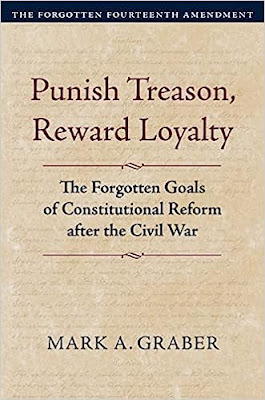
Mark A. Graber, Punish Treason, Reward Loyalty: The Forgotten Goals of Constitutional Reform after the Civil War (University of Kansas Press, 2023)
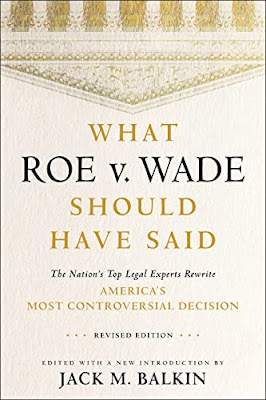
Jack M. Balkin, What Roe v. Wade Should Have Said: The Nation's Top Legal Experts Rewrite America's Most Controversial Decision - Revised Edition (NYU Press, 2023)

Andrew Koppelman, Burning Down the House: How Libertarian Philosophy Was Corrupted by Delusion and Greed (St. Martin’s Press, 2022)

Gerard N. Magliocca, Washington's Heir: The Life of Justice Bushrod Washington (Oxford University Press, 2022)
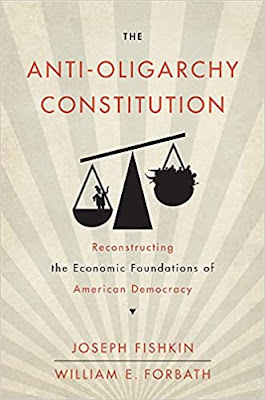
Joseph Fishkin and William E. Forbath, The Anti-Oligarchy Constitution: Reconstructing the Economic Foundations of American Democracy (Harvard University Press, 2022)

Mark Tushnet and Bojan Bugaric, Power to the People: Constitutionalism in the Age of Populism (Oxford University Press 2021).

Mark Philip Bradley and Mary L. Dudziak, eds., Making the Forever War: Marilyn B. Young on the Culture and Politics of American Militarism Culture and Politics in the Cold War and Beyond (University of Massachusetts Press, 2021).

Jack M. Balkin, What Obergefell v. Hodges Should Have Said: The Nation's Top Legal Experts Rewrite America's Same-Sex Marriage Decision (Yale University Press, 2020)

Frank Pasquale, New Laws of Robotics: Defending Human Expertise in the Age of AI (Belknap Press, 2020)

Jack M. Balkin, The Cycles of Constitutional Time (Oxford University Press, 2020)

Mark Tushnet, Taking Back the Constitution: Activist Judges and the Next Age of American Law (Yale University Press 2020).

Andrew Koppelman, Gay Rights vs. Religious Liberty?: The Unnecessary Conflict (Oxford University Press, 2020)

Ezekiel J Emanuel and Abbe R. Gluck, The Trillion Dollar Revolution: How the Affordable Care Act Transformed Politics, Law, and Health Care in America (PublicAffairs, 2020)

Linda C. McClain, Who's the Bigot?: Learning from Conflicts over Marriage and Civil Rights Law (Oxford University Press, 2020)
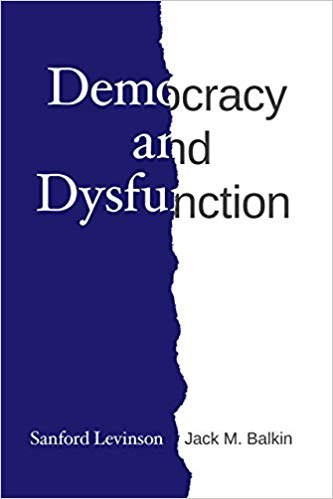
Sanford Levinson and Jack M. Balkin, Democracy and Dysfunction (University of Chicago Press, 2019)

Sanford Levinson, Written in Stone: Public Monuments in Changing Societies (Duke University Press 2018)

Mark A. Graber, Sanford Levinson, and Mark Tushnet, eds., Constitutional Democracy in Crisis? (Oxford University Press 2018)

Gerard Magliocca, The Heart of the Constitution: How the Bill of Rights became the Bill of Rights (Oxford University Press, 2018)

Cynthia Levinson and Sanford Levinson, Fault Lines in the Constitution: The Framers, Their Fights, and the Flaws that Affect Us Today (Peachtree Publishers, 2017)

Brian Z. Tamanaha, A Realistic Theory of Law (Cambridge University Press 2017)

Sanford Levinson, Nullification and Secession in Modern Constitutional Thought (University Press of Kansas 2016)

Sanford Levinson, An Argument Open to All: Reading The Federalist in the 21st Century (Yale University Press 2015)

Stephen M. Griffin, Broken Trust: Dysfunctional Government and Constitutional Reform (University Press of Kansas, 2015)

Frank Pasquale, The Black Box Society: The Secret Algorithms That Control Money and Information (Harvard University Press, 2015)

Bruce Ackerman, We the People, Volume 3: The Civil Rights Revolution (Harvard University Press, 2014)
Balkinization Symposium on We the People, Volume 3: The Civil Rights Revolution

Joseph Fishkin, Bottlenecks: A New Theory of Equal Opportunity (Oxford University Press, 2014)

Mark A. Graber, A New Introduction to American Constitutionalism (Oxford University Press, 2013)

John Mikhail, Elements of Moral Cognition: Rawls' Linguistic Analogy and the Cognitive Science of Moral and Legal Judgment (Cambridge University Press, 2013)

Gerard N. Magliocca, American Founding Son: John Bingham and the Invention of the Fourteenth Amendment (New York University Press, 2013)

Stephen M. Griffin, Long Wars and the Constitution (Harvard University Press, 2013)

Andrew Koppelman, The Tough Luck Constitution and the Assault on Health Care Reform (Oxford University Press, 2013)

James E. Fleming and Linda C. McClain, Ordered Liberty: Rights, Responsibilities, and Virtues (Harvard University Press, 2013)
Balkinization Symposium on Ordered Liberty: Rights, Responsibilities, and Virtues

Andrew Koppelman, Defending American Religious Neutrality (Harvard University Press, 2013)

Brian Z. Tamanaha, Failing Law Schools (University of Chicago Press, 2012)

Sanford Levinson, Framed: America's 51 Constitutions and the Crisis of Governance (Oxford University Press, 2012)

Linda C. McClain and Joanna L. Grossman, Gender Equality: Dimensions of Women's Equal Citizenship (Cambridge University Press, 2012)

Mary Dudziak, War Time: An Idea, Its History, Its Consequences (Oxford University Press, 2012)

Jack M. Balkin, Living Originalism (Harvard University Press, 2011)

Jason Mazzone, Copyfraud and Other Abuses of Intellectual Property Law (Stanford University Press, 2011)

Richard W. Garnett and Andrew Koppelman, First Amendment Stories, (Foundation Press 2011)

Jack M. Balkin, Constitutional Redemption: Political Faith in an Unjust World (Harvard University Press, 2011)

Gerard Magliocca, The Tragedy of William Jennings Bryan: Constitutional Law and the Politics of Backlash (Yale University Press, 2011)

Bernard Harcourt, The Illusion of Free Markets: Punishment and the Myth of Natural Order (Harvard University Press, 2010)

Bruce Ackerman, The Decline and Fall of the American Republic (Harvard University Press, 2010)
Balkinization Symposium on The Decline and Fall of the American Republic

Ian Ayres. Carrots and Sticks: Unlock the Power of Incentives to Get Things Done (Bantam Books, 2010)

Mark Tushnet, Why the Constitution Matters (Yale University Press 2010)
Ian Ayres and Barry Nalebuff: Lifecycle Investing: A New, Safe, and Audacious Way to Improve the Performance of Your Retirement Portfolio (Basic Books, 2010)
.jpg)
Jack M. Balkin, The Laws of Change: I Ching and the Philosophy of Life (2d Edition, Sybil Creek Press 2009)

Brian Z. Tamanaha, Beyond the Formalist-Realist Divide: The Role of Politics in Judging (Princeton University Press 2009)
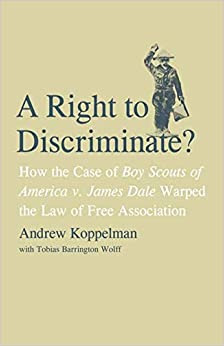
Andrew Koppelman and Tobias Barrington Wolff, A Right to Discriminate?: How the Case of Boy Scouts of America v. James Dale Warped the Law of Free Association (Yale University Press 2009)

Jack M. Balkin and Reva B. Siegel, The Constitution in 2020 (Oxford University Press 2009)
Heather K. Gerken, The Democracy Index: Why Our Election System Is Failing and How to Fix It (Princeton University Press 2009)

Mary Dudziak, Exporting American Dreams: Thurgood Marshall's African Journey (Oxford University Press 2008)

David Luban, Legal Ethics and Human Dignity (Cambridge Univ. Press 2007)

Ian Ayres, Super Crunchers: Why Thinking-By-Numbers is the New Way to be Smart (Bantam 2007)

Jack M. Balkin, James Grimmelmann, Eddan Katz, Nimrod Kozlovski, Shlomit Wagman and Tal Zarsky, eds., Cybercrime: Digital Cops in a Networked Environment (N.Y.U. Press 2007)

Jack M. Balkin and Beth Simone Noveck, The State of Play: Law, Games, and Virtual Worlds (N.Y.U. Press 2006)

Andrew Koppelman, Same Sex, Different States: When Same-Sex Marriages Cross State Lines (Yale University Press 2006)
Brian Tamanaha, Law as a Means to an End (Cambridge University Press 2006)
Sanford Levinson, Our Undemocratic Constitution (Oxford University Press 2006)
Mark Graber, Dred Scott and the Problem of Constitutional Evil (Cambridge University Press 2006)
Jack M. Balkin, ed., What Roe v. Wade Should Have Said (N.Y.U. Press 2005)
Sanford Levinson, ed., Torture: A Collection (Oxford University Press 2004)
Balkin.com homepage
Bibliography
Conlaw.net
Cultural Software
Writings
Opeds
The Information Society Project
BrownvBoard.com
Useful Links
Syllabi and Exams